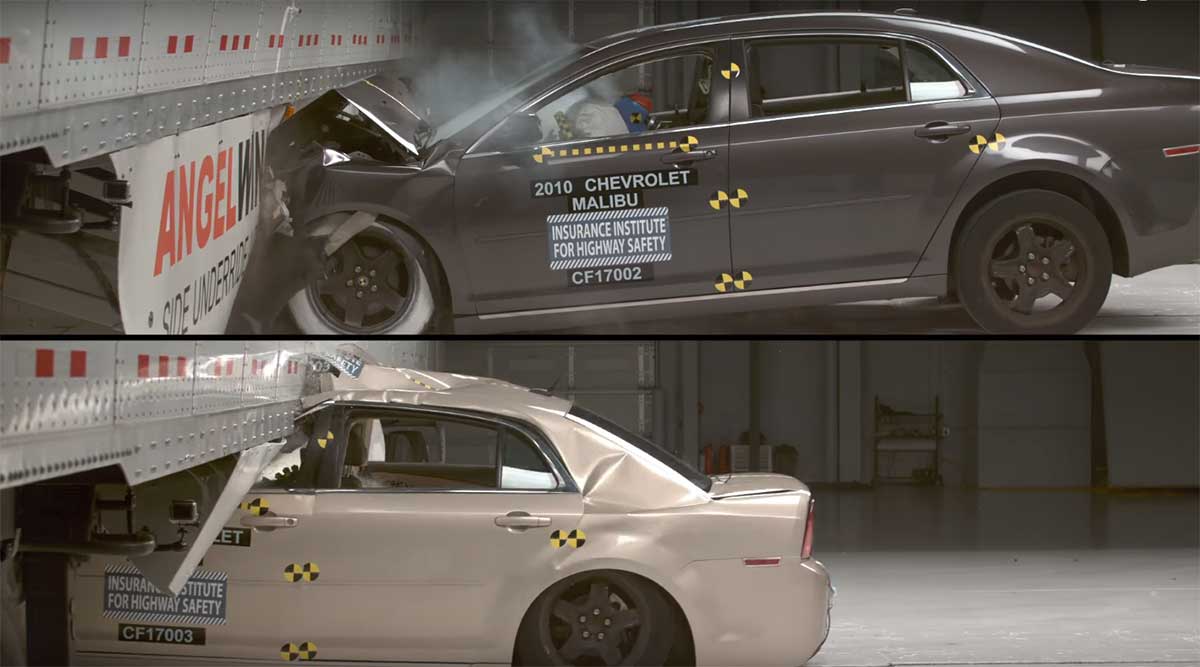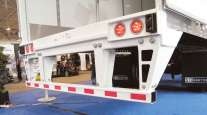Senior Reporter
Highway Safety Institute Backs Side Underride Guards for Trailers

The Insurance Institute for Highway Safety said May 10 it supports creating a new safety mandate requiring side underride guards on semitrailers to help reduce a leading cause of truck-involved accident fatalities. The move follows a March visit to Capitol Hill from citizen advocates who presented lawmakers with draft language of a bill requiring more underride protection on various trucks.
Federal law requires large trucks to have rear underride guards but not side guards, IIHS said.
In 2015, 301 of the 1,542 passenger vehicle occupants killed in two-vehicle crashes with a tractor-trailer died when their vehicles struck the side of a tractor-trailer, IIHS said, citing its own data. This total compares with 292 people who died when their passenger vehicles struck the rear of a tractor-trailer, according to the institute.
“First, it's important to recognize that all crashes are tragedies, but we also need to recognize that these guards are collision mitigation and not collision avoidance equipment and [American Trucking Associations'] primary safety goal is to prevent crashes,” said ATA spokesperson Sean McNally.
“ATA believes the best way to prevent underride deaths is to prevent crashes in the first place, which is why our industry invests more than $9 billion in safety initiatives. Wider deployment of advanced vehicle safety technologies like automatic emergency braking and forward collision warning systems can help prevent all kinds of crashes, including those into the sides of trucks,” McNally said.
“Side underride crash protection has several complicating factors — engineering tradeoffs involving weight, strength and effectiveness — that have prevented a consensus around adopting side underride guards," he added. "For example, side underride guards would add significant weight and require stiffer trailers, which can develop cracks in the frame rails during normal operation, wearing out sooner and creating a safety issue of potential trailer failure during operation.
“Avoiding the crash in the first place is even more effective than trying to manage the impact of a crash, and ATA is working on several initiatives, including electronic logging devices and other emerging crash warning and avoidance technologies that can help prevent all kinds of crashes,” McNally said .
Because of gaps in federal crash data, IIHS said its researchers could not determine exactly how many of those side crashes involved underride contact, but — using law enforcement’s photographic documentation of crashes in Indiana — they estimated underride occurs in about 50% of fatal crashes between large trucks and passenger vehicles.
“Our tests and research show that side underride guards have the potential to save lives,” David Zuby, the institute’s executive vice president and chief research officer, said in a statement. “We think a mandate for side underride guards on large trucks has merit, especially as crash deaths continue to rise on our roads.”
Tests conducted this spring marked the first time IIHS had evaluated a side underride guard, according to the institute. A 2012 IIHS study found that strong side underride guards have the potential to reduce risk of injury in about 75% of large-truck side crashes producing a fatality or serious injury to a passenger vehicle occupant.
Dedicated to reducing deaths, injuries and property damage from motor vehicle crashes, IIHS is wholly supported by auto insurers.
Trailer makers said they were prepared to adjust to any mandate.
“We do not currently offer this feature. Like other manufacturers, we have looked at the concept but have not yet found a way to make them commercially viable,” Glenn Harney, chief sales officer at Hyundai Translead, told Transport Topics. “If the government makes them mandatory, we would, of course, do our best.”
Use of side guards will have to emerge from regulations, “or else the playing field won’t be level, and no one is going to accept it,” said Charles Willmott, chief sales officer at trailer maker Strick Group.
“If the industry wants heavier trailers and to spend more money, we can reduce [the number of fatalities] with side impact [guards]. So from a public safety standpoint, that makes, potentially, good sense,” Willmott said.


